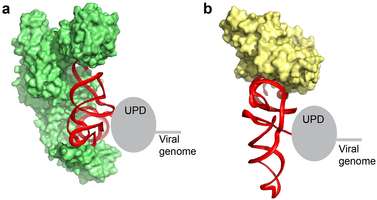Researchers explain mechanism that helps viruses spread

In an article published in the scientific journal Nature, a University of Colorado School of Medicine researcher and colleagues explain how RNA molecules found in certain viruses mimic the shape of other molecules as part of a strategy to 'hijack' the cell and make more viruses.
The findings by Jeffrey S. Kieft, PhD, associate professor of biochemistry and molecular genetics at the School of Medicine and an early career scientist with the Howard Hughes Medical Institute, and his colleagues solve a biochemical and molecular mystery that has confounded scientists for decades.
Viruses are worldwide threats to health and agriculture. To multiply, viruses infect a cell and take over that cell's biochemical machinery. Thus, understanding the fundamental molecular processes used by viruses to conquer cells is important. Among these processes is the ability of molecules created by viruses to 'mimic' the structure and behavior of cellular molecules. The virus' molecular 'Trojan horses' are part of their strategy to take over cells.
The paper describes the three-dimensional structure of a viral RNA that mimics one of the most abundant RNAs found in the cell. It was known for many years that this viral RNA was a molecular mimic. However, how the RNA acts as a mimic, how it switches between different structures, and how it performs multiple tasks was a mystery.
Using a technique called x-ray crystallography, Kieft and colleagues visualized the molecule's complex three-dimensional structure to high resolution. They found that the viral RNA has a 'two-faced' architecture: one face is a mimic of the cell's RNA, the other face is less similar and this probably gives the ability to perform several tasks during infection. This type of behavior may be widespread, thus this research could apply to many different viruses.
This understanding of how a viral RNA can mimic other molecules as part of a strategy to 'hijack' a cell may help scientists develop treatments or vaccines against infectious diseases.
More information: "The structural basis of transfer RNA mimcry and conformational plasticity by a viral RNA," is published online on June 8 by Nature: www.nature.com/nature/journal/ … ull/nature13378.html
Journal information: Nature
Provided by University of Colorado Denver
















